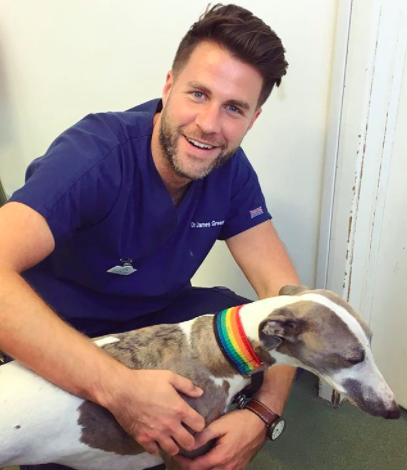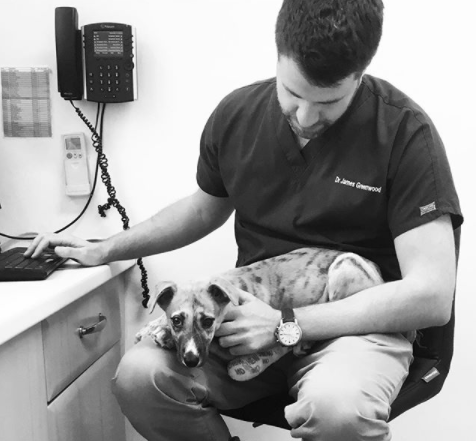Whether you love or hate social media, it has become almost impossible not to have some kind of relationship with it. While some avoid it like the plague, for others it has become an addiction, posting everything from their breakfast cereal to their baby’s first poop!
However, from a veterinary business point of view, social media is a tool that can help connect you with the local pet owning population like never before.
Most veterinary practices still rely on ‘word of mouth’ as being their most useful marketing tool. That will likely never change – if someone helps you or your pet, it is human instinct to share your gratitude towards that person with other friends, so that they may also receive the same level of help if they experience a similar situation with their pet.
From a veterinary practice perspective, it is heartwarming to hear clients recommending your services to their friends, but to actually encourage and control that as a marketing tool is difficult.
And this is where social media is your new best friend. This is an opportunity to reach out to both your bonded clients and new pet owners alike to tell them why you are the best practice in the area and why they should only consider choosing your clinic for their pet’s health and wellbeing.
1) Be as real online as you are in real life
If an owner asked a question at the reception desk about which pet food is best to feed their dog, you wouldn’t sit and completely ignore the question. That would be deemed rude and uncaring.
Exactly the same applies online. People will (unfortunately) expect the same level of service on your Facebook page as they do in your waiting room.
Assign a member of the team to be chief social media monitor. By turning on notifications – as soon as someone makes a comment on your social media page you can respond and interact, which in turn makes the pet owner feel respected and listened to and more likely to visit the clinic.

2) Not sure what to post? YOU WORK WITH ANIMALS!!
Has it totally passed you by that the internet is jammed full of cute pictures of animals? I’m always amazed when veterinarians say to me, ‘But what should I post? No one wants to see a boring vaccination clinic.’ WRONG!! In the world of social media, a picture of that cute dog in for a vaccination is the perfect opportunity to take a quick picture on your smart phone and upload with a caption about how important regular vaccinations are. Easy! That’s your post for the day!
3) Make your content interesting and engaging
Post content that will stop people in their tracks and make them look at your page. For example, you could encourage followers to tag their friends by running a competition to ‘win a free health check at your clinic for you and a friend’. You could feature a ‘pet of the week’. You could post about your work in the local community – school visits, dog shows. Post pictures of staff members so followers get to ‘meet the team’.
This all helps to create your online personality that your bonded followers will love to engage with and hopefully write lots of positive comments. Why does that matter? Because if someone new comes along and reads all the lovely positive messages, they are more likely to realize that your clinic is the one they should join.

4) Pick your platform
There are so many social media platforms now, you really need to decide which one will work the best for your clinic.
Most clinics starting out on social media decide to open up an account across all the major channels and think they can just post the same content across them all.
Unfortunately, it doesn’t quite work that way. A photo that might do really well on Instagram might be totally lost on Twitter. And a video on Facebook will be too long to cross-post on Instagram.
Pick which platform works the best for your style of content and put all your efforts into that one account to start with. To run a successful social media page across multiple channels is daunting and time consuming.
5) What to do if things turn nasty?
Social media is all about engagement – posting content that will generate reaction and conversation. Even topical conversation can be interesting and informative, so don’t be too afraid to post an article that might challenge some people’s views.
However, there will always be people out there that will use social media as a platform to vent their anger, to bully other people and to spread negativity. If this is directed towards your veterinary business – that can feel hurtful and often the comments are totally unjustified.
In these situations, it is important to follow the golden rule of social media – engage. Don’t ignore the comment, don’t block that user as a quick fix, don’t try to hide their comments. The best thing to do is engage with them, ideally over a private message, or even better, invite them to come into the clinic to discuss their concerns and reach a solution.

Generally speaking, while it may feel awful to be the victim of online trolling, there are still ways to turn that negative into a positive. If you handle that negative comment with dignity, other followers will read your reply and that may actually earn you even more respect. Keep it in perspective, stay calm and work with that person to find a resolution. Once you have achieved that, you may even be able to encourage them to delete their original comment.
You can follow James on Instagram, at @DrJGreenwood
James is wearing Cherokee Uniforms scrubs.
Sponsored by Cherokee Uniforms

















